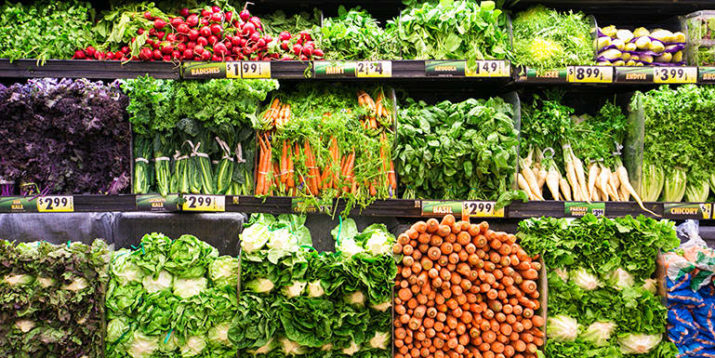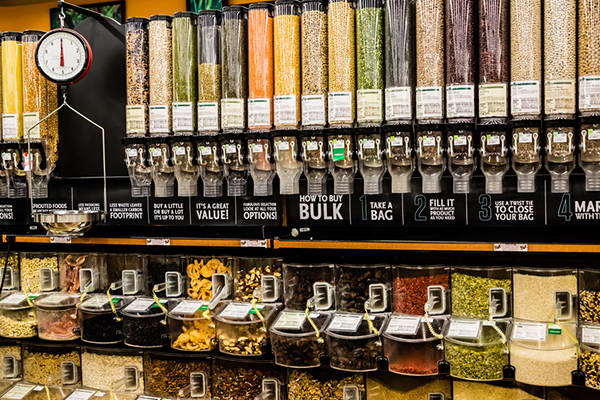7 Tips to Save Money on Food

We already know that cooking at home can help us eat healthier — and even eat less. But can you do it without breaking the bank? Absolutely: You can save money on groceries without making extreme couponing your new hobby.
We’re skipping the obvious ways to cut costs (sign up for coupons from favorite brands and wait for sales… we know you got that). Instead, we’re sharing seven real-life tips and tricks to keep your budget in check while still filling your cart with fresh, nutritious food.
Try These 7 Tips to Save Money on Food
1. Be flexible
Armed with your list and your meal plan, you head to the market to stock up. Then you see there’s no asparagus — and you do a double-take at the price of strawberries. Rather than scrapping your entire plan, pull out your recipe ninja skills.
If you need collards but kale is on sale, make the swap. If chicken breasts are a better deal than turkey cutlets, revise the menu. To change up ingredients without affecting the integrity of a recipe, keep items as similar as possible: No nectarines? Choose peaches. Arugula overpriced? Find a different bitter green. Fresh basil too pricey? Use parsley (or go with dried).
2. Join the club
A five-pound bag of raw almonds, a double-size container of baby spinach and a three pack of low-carb wraps — you’ll be able to find the kitchen staples you need for your healthy diet, be it Paleo, vegan, or anything in between.
Tip: Split the membership fee with a friend. Since the official member needs to be present, you’ll get BFF time while you grocery shop… just skip the samples.

3. Go price shopping
No club nearby? No problem. Amazon Prime, Thrive Market, and Vitacost are among several websites offering good deals on groceries — including kid-friendly fare. (Thrive and Amazon also have apps, so you can compare prices while at the grocery store.)
Bonus: Buying some of your groceries online could help you eat better. According to research, ordering food ahead of time may lead to healthier food choices and fewer splurges. Talk about a sound endorsement for meal planning!
4. Ignore the labels
Don’t overlook the nutrition facts. Instead, ignore the front of the label, says Kristen Arnold, R.D.N., L.D., M.S. “The only difference is the taste, and a lot of times the store brands taste better than the name brands,” says Arnold. You’ll save an average of 25 percent and store brands were deemed as delicious as the name brands more than half the time.
Splurge on any product where the specific seasonings and ingredients matter — like salsa or premium ice cream — but save on staples like diced tomatoes, low-sodium broth, and Greek yogurt.
5. Do the math
The larger container is usually — but not always — the best deal. Read shelf tags to see which option has the lowest cost per ounce or pound. This will help you decide whether the 12-ounce jar on sale for $4.99 or the 16-ounce jar for $6.99 is a better deal. Another tricky move? Those 10 for 10 sales. Peek at the other items in that category (and the non-sale price) to see whether you’re really saving.

6. Shop the bulk aisle
Mainstream supermarkets now offer everything from flour and sugar to tamari-roasted almonds and candied ginger in bulk bins. You’re not paying for fancy packaging or marketing, so the prices are lower — and you can take only what you need. Arnold relies on bulk items to keep her food bills low, and beyond the bins, she loads up on bags of sweet potatoes and apples — it’s cheaper than buying them loose.
Tip: Get kids excited about healthier snacks by letting them scoop ingredients for their very own trail mix.
7. Carry a basket
If you just need a few items, don’t tempt yourself with the extra space of a full shopping cart. As you fill your basket, you’ll feel the weight of each item you add to it, which could make you think twice about picking up a half-gallon of ice cream or anything else that’s not on your list.
